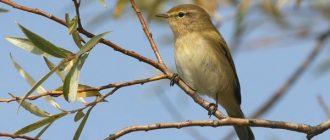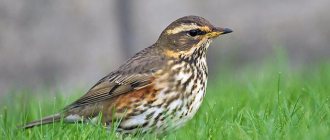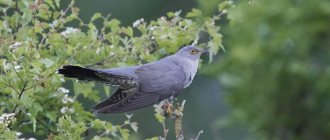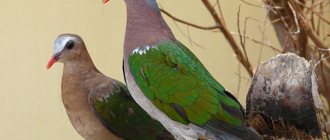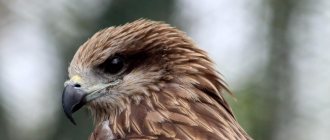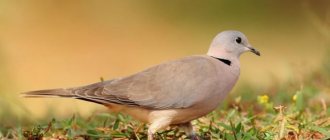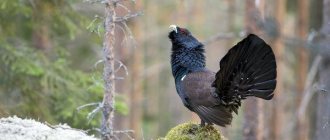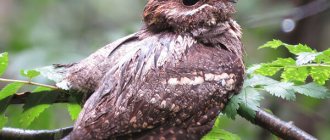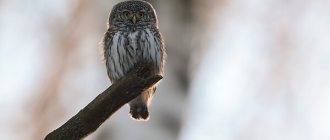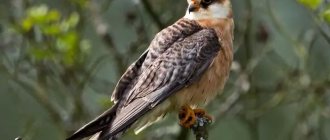Description of the bird
More than 50 species of small songbirds belong to the genus Warbler. Previously, they were classified as members of the warbler family, but then scientists separated the birds into a separate family.
Warblers are found in Eurasia and Africa, and especially large populations live in eastern Asia. These adorable little creatures are distinguished from warblers by their long legs, short tail and thin beak. The predominant colors of the birds' plumage are yellow, brown and green. The belly is usually lighter than the back. In general, all species are very similar to each other and differ only slightly. For example, some warblers have light stripes under their eyes and light feathers on their wings.
Singing
The warbler is a songbird. Her songs are short (up to 5 seconds), but very clear and clear.
They continue without interruption and are somewhat similar to whistling. Mostly males sing, starting their singing season in the spring and ending almost at the end of July. Females make any sounds less often.
Different types of warblers differ not only in appearance, but also in their singing. Some are owners of high notes, others can change the tonality to a lower one.
Some species combine 10 songs into one with smooth transitions, performing it even in the foulest weather, while others know few sounds, so their trill resembles a crack.
Feeding characteristics of the warbler
— Advertising —
Warblers are insectivorous birds. They eat small forest and aquatic insects, their larvae, and spiders. Birds also eat flies, caterpillars, butterflies, and beetles. In the fall, you include berries in your diet, for example, elderberries, raspberries, blueberries, and currants.
The warbler finds food in the crowns of trees, in bushes, near foliage in the air. It absorbs about a third of its weight in insects per day, and even more before the autumn migration in order to make fat reserves for a long flight.
Vesnichka
The willow warbler bird has a body length of about thirteen centimeters, the maximum wingspan is twenty-two centimeters. Weight about nine grams. Outwardly, it is very similar to another species - the chiffchaff, but differs from it in its singing.
The back of this bird is olive green, the belly is yellowish-white. The throat and chest are yellow, there are light yellow stripes above the eyes. The willow bird nests in Europe and flies to Africa for the winter.
Bird species
Brown-cheeked Warbler
The body length of this small bird reaches 11 cm. The cheeks are painted in a characteristic red color. The paws are dark. The bird's top is greenish-gray, its belly is light. Distributed in the countries of central Africa (Congo, Burundi, Rwanda, Uganda).
Laura's Warbler
It lives in the tropical forests of Africa and is found in countries such as Angola, Zambia, Congo, Tanzania. The species was discovered by the wife of the American ornithologist Boulton, after whom it was named "Laura".
Warbler
The bird's body length is 11-13 cm, its wingspan is up to 22 cm, its weight is 8-11 g. The species is very similar to the chiffchaff, but differs from it in its singing. The back is olive green, the belly is whitish-yellow. The bird is distinguished by a yellow throat and chest and yellowish stripes above the eyes. The willow warbler is a resident of Europe. It flies to Africa for the winter.
Chiffchaff
The species is found in coniferous and mixed forests of Asia and Europe, even in the far northern regions. For the winter, it migrates to the Mediterranean countries, South Asia and Central Africa.
The bird is small: body length up to 12 cm, weight 7-8 g, in females - slightly less. During the nesting period, the back of males and females is grayish-brown, with an olive tint in the western subspecies. The belly is whitish, with a yellow tint on the sides and chest. The eyebrows are highlighted with a white stripe. In autumn, the color fades, the sides and breast merge with the rest of the plumage. The Chiffchaff has a sharp and dark beak and dark legs. The bird is distinguished from the willow warbler by its singing, consisting of the iridescent sounds “shadow-ting-tian-ting-ting-tian”.
Light-bellied Warbler
The body length of the species reaches 12 cm, the wingspan is 18-20 cm. Body weight is from 7 to 9 g. The back is brown, the belly is white. A white eyebrow and yellow undertail are visible. The song consists of a repeated "pu-ee" sound. The light-bellied warbler lives in the west and southwest of Central Europe. Winters in Africa south of the Sahara.
Warbler rattle
The distribution area of the species is the temperate and taiga zone of Europe. For the winter, the bird migrates to tropical Africa. The body length of the species is 11-13 cm, the wingspan is up to 24 cm. Body weight is up to 13 g. The plumage on the back is green, on the chest it is yellowish-white. The song sounds like a combination of the sounds "sib" or "chuyu" with characteristic cracking sounds.
Brown Warbler
A resident of East Asia, it reaches a length of 14 cm. The back plumage of the bird is dark brown. The beak is sharp, straight, short. Legs dark in color. On the eyes of the brown warbler there is a dark stripe, above which a light stripe is visible. The eyes are outlined in white. The belly is dirty white, the breast is slightly darker. The sides and undertail are creamy. The tail is slightly rounded. In the song of the brown warbler, a sharp “check” sound is heard.
Thick-billed Warbler
Body length up to 13 cm, weight 13-14 g. The bird is found in forests in eastern Asia. Painted in brown-olive color.
King's Warbler
The bird has a green back and a light belly, a yellow stripe is visible on its head, and light stripes on its wings. The body length of the species is up to 10 cm, weight is about 7 grams. Lives in Southern and Eastern Siberia, Mongolia and China. The species is migratory and winters in Indochina.
Warbler
Habitat: Eastern Asia. Wingspan up to 16 cm, body length 10 cm. Weight from 4 to 9 g. The plumage on the back is olive green with light stripes. The belly is yellow-white. The beak is brown with a yellow base. Legs are reddish.
Warbler
The plumage is gray-green with a lighter belly. The bird is distinguished from other species by prominent flight feathers and a light stripe on the wings. Its body length reaches 13 cm. It nests in Russia, Brunei, China, Korea, Mexico, Mongolia, Scandinavian countries, Central and South Asia.
Green Warbler
Resident of Eurasia. Outwardly similar to the forest warbler, but smaller. The top is olive green, the bottom is grayish-white. A dark stripe with a yellow eyebrow is visible on the eyes. Legs are brown. The birds are about 10 cm in length, with a wingspan of 15 to 20 cm, and weighing about 8 g.
Light-headed Warbler
A bird with a body length of 12 cm, weighing about 8 g, with a typical plumage color: green back, light belly. There is a light eyebrow located above the eyes. The species is widespread in Asia (Bangladesh, China, India, Japan, Laos, Korea, Thailand, Singapore, Vietnam, Russia).
Distribution area and habitat
The warbler is often found in European and Asian coniferous and mixed forests during the warm season. You can meet such birds on the territory of the Russian Federation. They winter in Africa and the Mediterranean.
The area near the edge of a forest or clearing, as well as meadows and shrubs (but not thickets), if there are no trees nearby, are more suitable for their habitat.
Keeping warblers at home
Caring for warblers is easy. Only at first, in a cage, birds may behave restlessly and anxiously; in such cases, the cage is covered with a cloth. These little ones quickly get used to captivity and after a couple of weeks they can be safely released to fly.
Warblers have a peaceful nature and can get along with other species. But it is better not to leave several males together - they can quarrel over the female.
The warblers' cage contains perches, a drinking bowl and a bathing container. You can build a house for a pair of warblers, or leave grass, moss and leaves, from which the birds themselves will build a nest.
In one clutch, the female warbler has up to 7 small light-colored eggs. The female incubates them for two weeks, and feeds the offspring for the same amount of time.
Birds are also unpretentious in food. They are fed insects, mealworms, berries and fruits.
But the warblers will delight their owners all year round with their ringing trills.
Nesting and offspring
In nature, due to the large number of enemies, warblers live up to 5 years. They form pairs or stay in a flock; loners are rare. These birds are not too careful and often let strangers get too close to them. They are agile, dexterous and playful. Their flight is fast and undulating.
They camouflage their nests well. The structure is usually located not far from a stump in the ground (a small depression), covered with dry grass. The shape of the nest is spherical. The structure somewhat resembles a hut with a side entrance.
The male is responsible for finding a suitable place for laying eggs and protecting it throughout the entire period, while the female must improve the home. The warbler lays 4-7 eggs in May. If the climate of residence is warm enough, then laying occurs twice a season.
After 14 days, the chicks appear. They are naked (there is only hair on the head) and cannot yet protect themselves from the outside world. Both parents are responsible for feeding the offspring.
Important! Chicks feed up to 300 times a day.
Babies develop quickly due to a purely protein diet and fly out of the nest already on the 15th day of life.
Green
The green warbler bird is a resident of Eurasia. Outwardly, it is very similar to the forest warbler, but smaller. The head and back are olive green, the underparts are gray-white. There is a dark stripe above the eyes with yellow eyebrows. The legs are colored brown. The body length of this bird does not exceed ten centimeters, the wingspan is twenty centimeters, and the weight is about eight grams.
Natural enemies
These little birds have quite a few natural enemies. In the European part these are foxes, wild cats and birds of prey. For birds living in Asia, snakes and lizards are added to them. Predators pose a particular danger to nests. After all, eggs and chicks are very easy prey, and green warblers often nest right on the ground.
This is interesting! Among the factors influencing the life and numbers of these birds, the main one is anthropogenic.
Deforestation, drainage of water bodies and agricultural activities have a negative impact on the number of green warblers. But due to the large numbers of these birds, their population remains high.
Return to content
